25+ SAMPLE Safe Work Method Statement
-

Safe Work Method Statement Audit Report
download now -
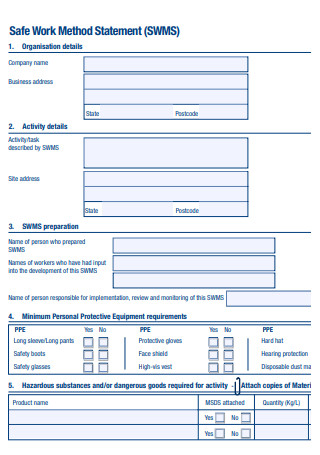
Contractors Safe Work Method Statement
download now -
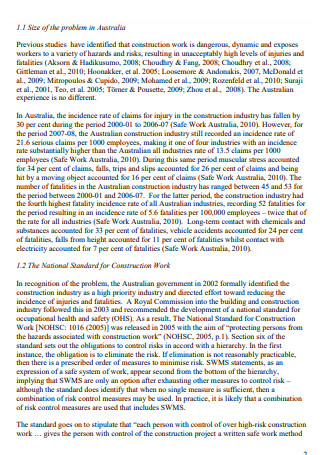
Role of Safe Work Method Statements
download now -
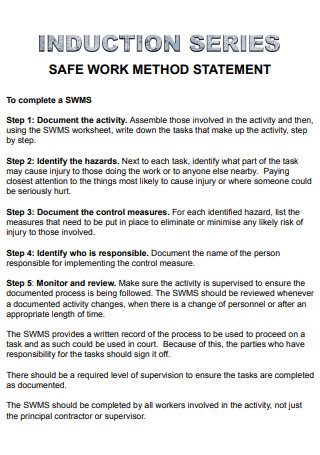
Induction Series Safe Work Method Statements
download now -
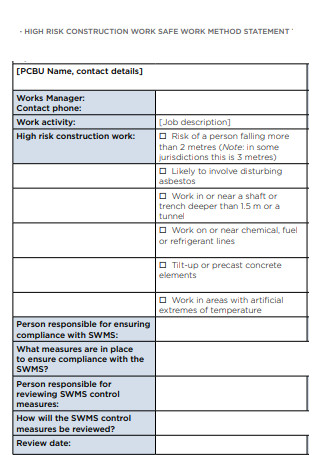
Safe Work Method Statement for High-risk Construction Work
download now -

Safe Work Method Statement Fact Sheet
download now -
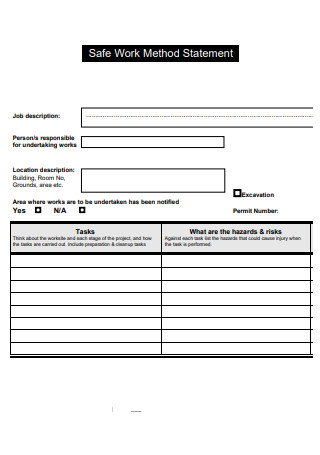
Safe Work Method Statement
download now -
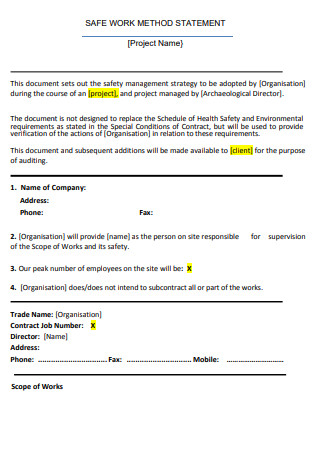
Sample Safe Work Method Statement
download now -
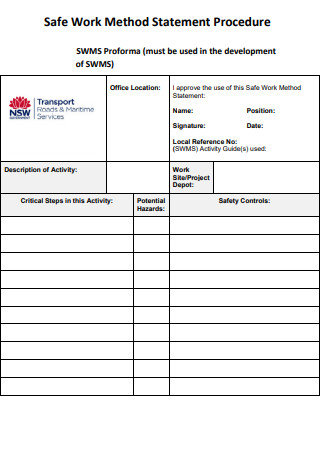
Safe Work Method Statement Procedure
download now -
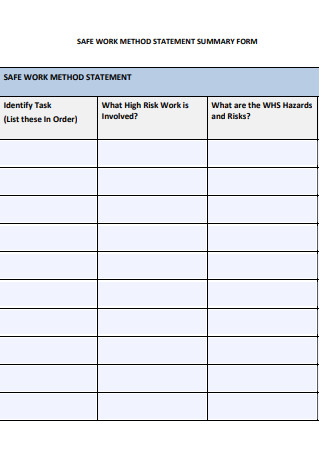
Safe Work Method Statement Summary Form
download now -
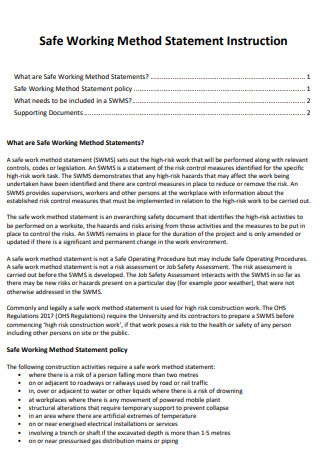
Safe Work Method Statement Instruction
download now -
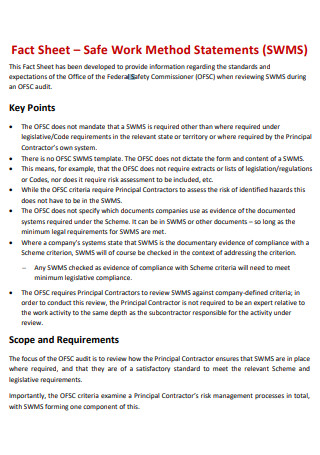
Safe Work Method Statement Example
download now -
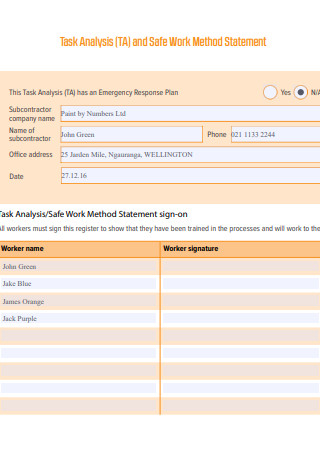
Task Analysis And Safe Work Method Statement
download now -
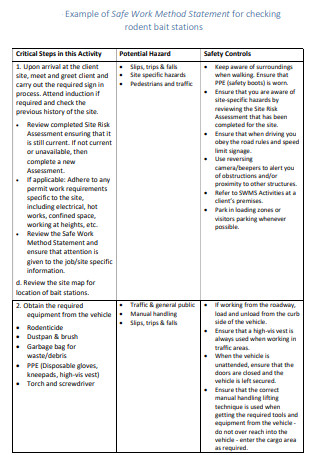
Example of Safe Work Method Statement for Checking Rodent Bait
download now -
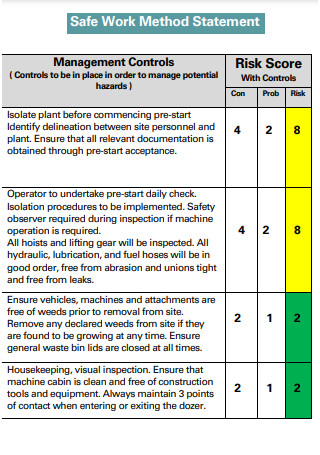
Environmental Safe Work Method Statement
download now -
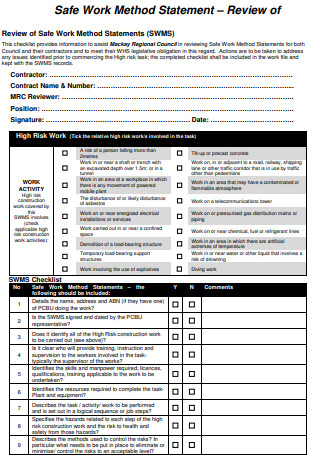
Review of Safe Work Method Statements
download now -

Exhibitor Safe Work Method Statement
download now -
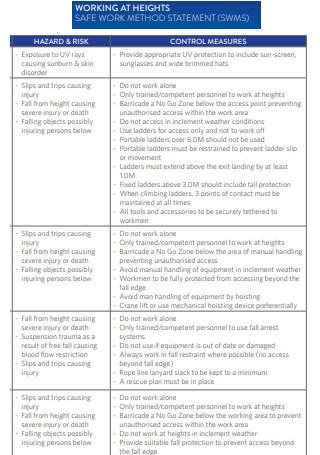
Equipment Safe Work Method Statement
download now -
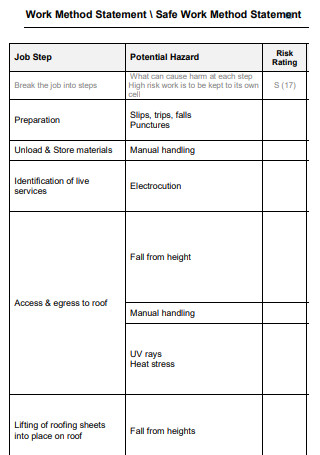
Builder Safe Work Method Statement
download now -
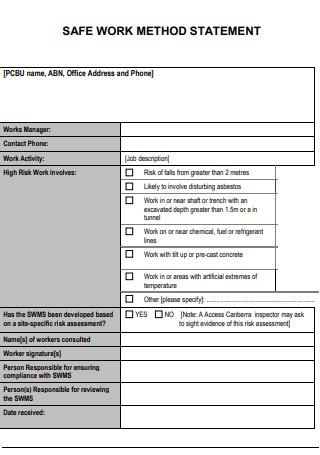
Simple Safe Work Method Statement
download now -
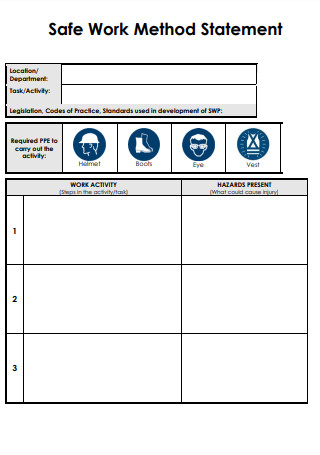
Concrete Safe Work Method Statement
download now -
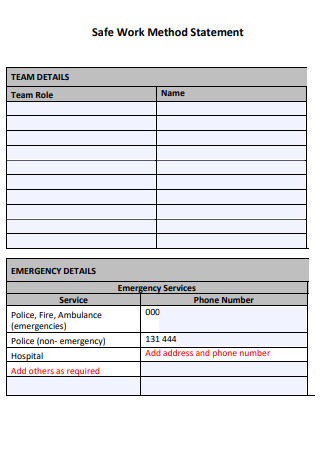
Printable Safe Work Method Statement
download now -
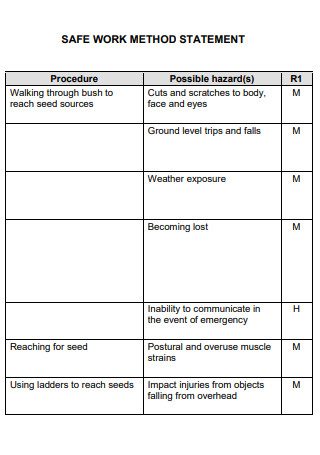
Seed Collection Safe Work Method Statement
download now -

Safe Work Method Statement And Daily Activity Briefing
download now -
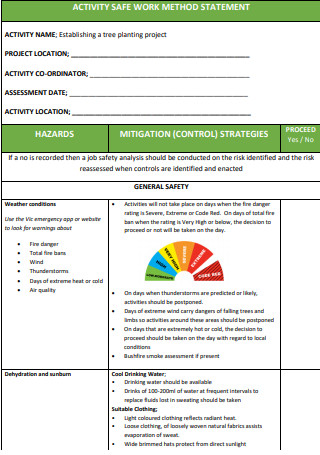
Activity Safe Work Method Statement
download now -
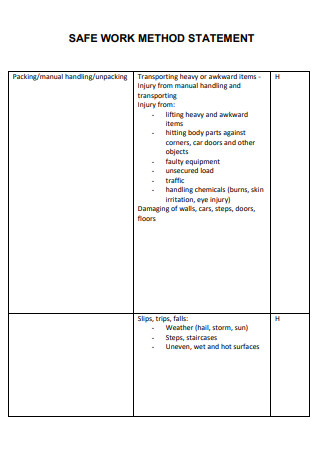
Covid 19 Safe Work Method Statement
download now
FREE Safe Work Method Statement s to Download
25+ SAMPLE Safe Work Method Statement
What Is a Safe Work Method Statement?
Components of a Safe Work Method Statement
Helpful Tips to Consider When Drafting a Safe Work Method Statement
FAQs
What components must always be present in the safe work method statement?
How often do you need to review a safe work method statement?
What is the difference between a safe work method statement and a job safety analysis?
What Is a Safe Work Method Statement?
A safe work method statement (SWMS) is a helpful document that outlines the high-risk activities and processes carried out within the workplace. It also details the possible hazards stemming from these activities and what countermeasures the establishment utilizes to control their occurrence. A single SWMS can serve multiple purposes for work that poses various risks in projects. High-risk construction work (HRCW) officially refers to the high-risk activities in the statement. In Australia, creating the SWMS is a sanctioned requirement for all construction projects in the country that deal with high-risk activities. It must also be available before any construction work begins. An SWMS undergoes continuous revisions and updating to incorporate additional activities of the project that are high-risk after the initial SWMS document. The SWMS is more than a procedure; it is a tool that helps supervisors and workers to monitor the control measures in the workplace.
According to the news release of the United States Bureau of Labor Statistics dating November 2020, a total of 2.8 million non-fatal workplace injuries and illnesses comes from the report by private industry employers. The estimations come from the Survey of Occupational Injuries and Illness (SOII).
Components of a Safe Work Method Statement
Safe work method statements are necessary and prevalent in the construction industry. As such, there are various formats for an SWMS document. There are essential elements that must be present in every safe word method statement to guarantee compliance with statutory laws. The format of the SWMS document varies, but each section and element is comparable to others despite the construction scope of work.
Helpful Tips to Consider When Drafting a Safe Work Method Statement
Remember that the SMWS is an informational document to explain the nature of work and the corresponding measures to lessen the hazards and risks for a project’s duration. One must have sufficient knowledge in handling and creating a safe work method statement to guarantee the safety of every person in the worksite. Aside from knowing the components, here are additional tips to help you in drafting the company’s safe work method statement.
Tip #1: Take the Time to Ask and Consult Knowledgeable Figures
When creating a safe work method statement, it is beneficial to consult experienced workers to collect crucial information on frequently overlooked details or subjects. It is also advantageous to involve every working individual to project meetings or planning processes to increase the likelihood of contributing ideas and addressing situations while implementing their tasks in the SWMS.
Tip #2: Planning Properly is Fundamental
Before beginning high-risk activities for a construction project, guarantee the accomplishment and availability of the safe work method statement. The project’s principal contractor must guarantee the presence of the SMWS before the commencement of any construction plan or action to avoid delays and incidents. It is also advisable to disseminate the SMWS document to all workers involved in the project to gain insight and understanding.
Tip #3: Guarantee Regular Reviewing and Revision of the SWMS
The principal purpose of the document is to diminish, if not eliminate, the occurrence of risks during construction work. It is imperative to conduct regular checks and monitoring that help distinguish and prevent any loopholes within construction processes. To be safe, prepare inspections monthly and yearly, especially if the project extends over a long period.
Tip #4: Keep the Information Precise and Straight to the Point
It helps to keep the details of the SMWS concise rather than wordy. Utilize clear, short, and topic-focused points in explaining potential hazards and the equivalent countermeasures to control their occurrence. In keeping the SMWS precise, workers can easily comprehend, perform, and monitor situations during the construction work.
Tip #5: Incorporate the Use of Illustrations as Necessary
The safe work method statement must easily interpret for everyone inside the worksite. In certain situations that there is a language barrier between the management, contractor, and workers, introducing various diagrams, photos, and other visual representations makes it easier for them to understand the document’s content.
Tip #6: Guarantee Acknowledgment and Conduct Random Checks
Each worker must guarantee the receipt, understanding, and acknowledgment of the SWMS by indicating their names and signatures at the end of the document. In their recognition, they confirm reading the components of the SWMS, including the associated work and corresponding risks. It also helps to initiate spontaneous reviews in the workplace, questioning employees and workers regarding the control measures in the SWMS. This step ensures that everyone on the worksite understands the risks and risk controls to complete the necessary tasks of the project. If there is an instance wherein workers do not comprehend the SWMS, identify and address the various gaps during the investigations.
FAQs
What components must always be present in the safe work method statement?
As there are various forms of the safe work method statement, each contractor or company utilizes its format. However, in all SWMS documents, information concerning high-risk activities, health and safety hazards, control measures, implementation of control measures, and revision and review dates.
How often do you need to review a safe work method statement?
It is advisable to keep a copy of the safe work method statement available for inspection. It must be readily accessible to all workers until the completion of work. These documents must be present for two years and must be reviewed and revised as necessary after a notifiable incident occurs.
What is the difference between a safe work method statement and a job safety analysis?
The main difference of the safe work method statement from a job safety analysis is the presence of high-risk construction work (HRCW) regulation. HRCW are 19 work and construction activities that cause significant and serious harm to workers if there is no safe observance of the action. The SWMS must identify the HRCW, including its hazards, control measures, and implementations of countermeasures.
In every workplace, it is of utmost importance to guarantee that workers have a safe working environment. In cases that management or company cannot assure the safety of individuals, it is necessary to spread information regarding work-related risks and measures to prevent or lessen their occurrence. The safe work method statement provides workers, especially those working on a construction site or project, a list of hazards they can encounter in their environment. As a contractor, all individuals must have a sufficient understanding of the risks present, and if possible, conduct reviews and revisions when incidents occur. Guarantee the safety and security of workers through utilizing the safe work method statement samples available above for use and download.
